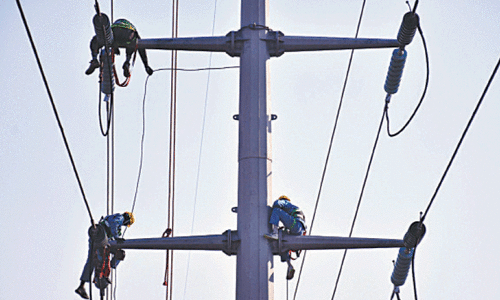ISLAMABAD: Despite stellar economic growth and significant progress in terms of poverty reduction, inequality persists in Asia and the Pacific, and in some instances it has intensified, revealed a new UN report released on Thursday.
“Time for Equality: The role of social protection in reducing inequalities in Asia and the Pacific” report released by the United Nations Economic and Social Commission for Asia and the Pacific (ESCAP) says growing disparities in income and wealth, as well as unequal opportunities, reinforce each other creating an “inequality trap” that disproportionately affects women and the most vulnerable members of society, including the poor, youth, persons with disabilities, older persons and migrants.
With the adoption of the ‘2030 Agenda for Sustainable Development’, policymakers and other stakeholders from the region have acknowledged that existing inequalities are having a powerful corrosive effect on the economic, social and environmental dimensions of development: inequality stifles the region’s economic dynamism; it undermines social cohesion and solidarity; and it hampers environmental sustainability.
The inequalities can threaten the region’s economic dynamism and sow the seeds of economic crisis by shortening the length of economic growth spells. Inequalities also have the potential of undercutting inclusive, pro-poor growth strategies and creating a middle-income trap, the report says.
Countries in the region would have achieved greater success in poverty reduction had not income inequalities increased along with economic growth.
Moreover, household debt and balance of payments deficits are more pronounced in countries with higher inequality, further jeopardising economic stability, it says.
It is increasingly recognised that there is no automatic trade-off between growth and equality; that market-led growth alone is not enough to achieve sustainable development; and that redistribution has a positive impact on economy. It is in the context of a growing consensus concerning the positive role of redistributive policies that social protection has come to the fore.
Governments in Asia and the Pacific are strengthening their efforts to broaden social protection coverage, and 21 out of 26 developing countries in the region for which data are available recorded an increase in social protection spending as a share of total government expenditures during the past two decades.
Despite this increased commitment and the strong evidence showing the positive contributions, social protection has on individuals, households and society, important social protection coverage gaps remain, the report points out.
More than 85 million children under the age of five are chronically malnourished; 18 million children of primary school age are not in school; and nearly 20 million births are not attended by skilled health personnel.
More than one billion workers in Asia and the Pacific are in vulnerable employment, characterised by low wages, few benefits, limited job security and often hazardous working conditions.
Only 30 per cent of persons above the retirement age receive an old-age pension; an estimated eight out of 10 workers are still not covered by a pension scheme.
Out-of-pocket health expenditures in the region are among the highest in the world; 80 per cent of the population has no access to affordable health care.
Published in Dawn, January 1st, 2016













































